


 النبات
النبات
 الحيوان
الحيوان
 الأحياء المجهرية
الأحياء المجهرية
 علم الأمراض
علم الأمراض
 التقانة الإحيائية
التقانة الإحيائية
 التقنية الحيوية المكروبية
التقنية الحيوية المكروبية
 التقنية الحياتية النانوية
التقنية الحياتية النانوية
 علم الأجنة
علم الأجنة
 الأحياء الجزيئي
الأحياء الجزيئي
 علم وظائف الأعضاء
علم وظائف الأعضاء
 الغدد
الغدد
 المضادات الحيوية
المضادات الحيوية|
Read More
Date: 8-11-2015
Date: 8-12-2020
Date: 8-12-2015
|
Immunity Mediated by B cells and Antibodies
The production of antibodies is the sole function of the B-cell arm of the immune system. Antibodies are useful in the defense against any pathogen that is present in the extracellular spaces of the body’s tissues.
Antibodies secreted by plasma cells in the secondary lymphoid tissues and bone marrow find their way into the fluids filling the extracellular spaces.
Antibodies are not in themselves toxic or destructive to pathogens: their role is simply to bind tightly to them.
This chapter will deal with three main topics:
Antibody Production by B lymphocytes.
The antibodies most effective at combating infections are those that are made early in an infection and bind strongly to the pathogen. This really is a completion between those two goals. B cells generally require help from activated T cells to mature into antibody-secreting plasma cells, this delays the onset of antibody production until around a week after the infection. And B cells take time to switch isotype and undergo affinity maturation, processes that are necessary for the production of the high-affinity antibodies that are most effective at dealing with pathogens. During the course of the infection the effectiveness of the antibodies produced improves steadily. This experience is retained in the form of memory B cells and high affinity antibodies which provide long-term immunity to reinfection.
A faster primary response is made to certain bacterial antigens that are able to activate B cells without the need for T-cell help. = IgM antibodies, and early defense helping to keep the infection at a relatively low level until a better antibody response can be developed.
B-cell activation requires cross-linking of surface immunoglobulin.
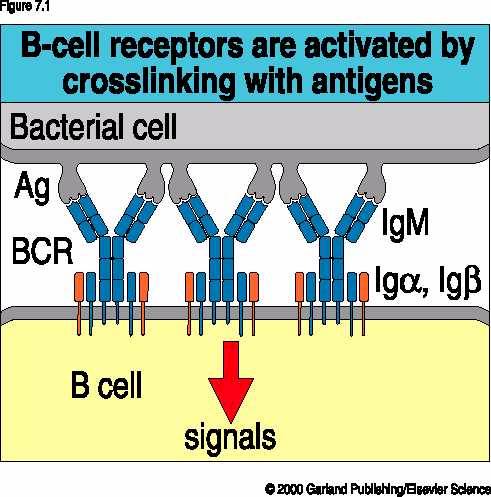
This isn’t the only signal required. You must have phosphorylation to occur, you must have added signals. One set of signals is delivered when the C-cell receptor becomes closely associated with another protein complex on the B-cell surface known as the B-cell co-receptor.
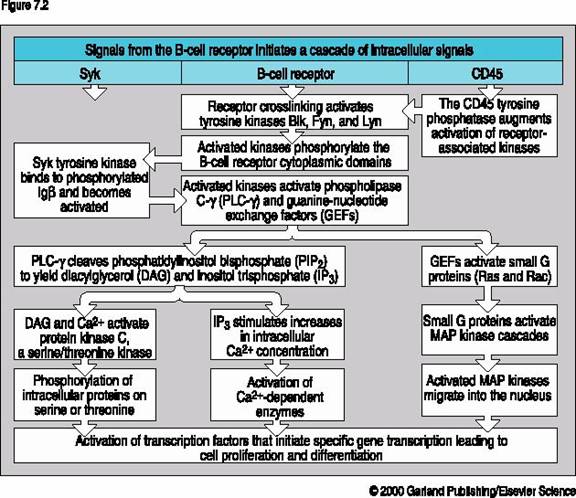
B-cell co-receptor is a complex of three proteins.
1. Complement receptor 2 ( CR2 or CD21), which binds to complement components deposited on the pathogen.
2. CD19 which acts as the signaling chain of the receptor
3. Protein CD81 ( TAPA-1) whose function is not yet known.
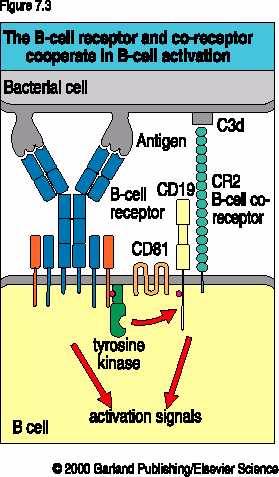
Phosphorylation and tyrosine kinase. Cross linked = cell signals increased 1000 -10,000 fold.
The antibody response to certain antigens does not require T-cell help.
Genetically the “bad guys” are different from us – mammalian cells. = repetitive epitopes.
Thymus independent antigens ( TI antigens) . Antigens that can activate B cells without the help of T cells. A
Thymus dependent antigens ( TD antigens) . They need T cell help.
For thymus independent antigens the need for T cell help is overcome in two different ways.
Examples are found in Figure 7.6- make sure you know some.
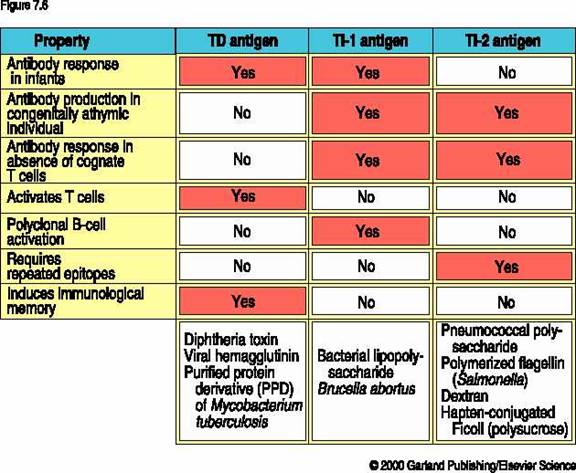
Still limited without T cells. IgM primarily. So you can get reinfection, kids do not develop a great response at all = age dependent.
B cells needing T-cell help are activated in secondary lymphoid tissues where they form germinal centers.
You need to get B cells, specific antigen and helper CD4 T cells are all brought together. = lymph node.
Antigens come from the infected tissue in lymph
Antigen specific lymphocytes enter from the blood.
Dendritic cells processing and transporting the antigens residing in the T-cell area of the lymph node. Macrophages can also eat, but you must have a professional antigen presenting cell there to become activated.
B cell receptor has two distinct roles in B cell activation
1. Binding antigen, which send a signal to the B cell’s nucleus
2. Internalizing antigen by receptor-mediated endocytosis which helps to facilitate presentation to helper T cells.
IL-2 = T cells.
So here we have other interleukins.
This is a self- enhancing process. The more contacts are made and the tighter they are bound , the more signals get generated and it becomes perpetual.
Example: CD4 T cell binds complexes of peptide antigen and MHC class II molecules on the B cell surface interaction also occurs between CD40 ligand on the T cell and CD40 on the B cell. This interaction signals the B cell to activate the transcription factor NFκB and increase surface expression of intercellular adhesion molecule 1 ( ICAM-1). The strengthens the cognate interaction between the B cell and the helper C4 T cell. A signal is produced in the T cell causes it to secrete cytokines, Interleukin 4 is characteristic of TH2 cells and essential for B cell proliferation.

This proliferation and rate of division increases to about once every 6 hours and they become large, metabolically active cells called centroblasts. The lymph node changes morphology and it becomes a germinal center with newly formed B cells. Takes about one week and represents the enlarged and swollen lymph nodes draining an infection.
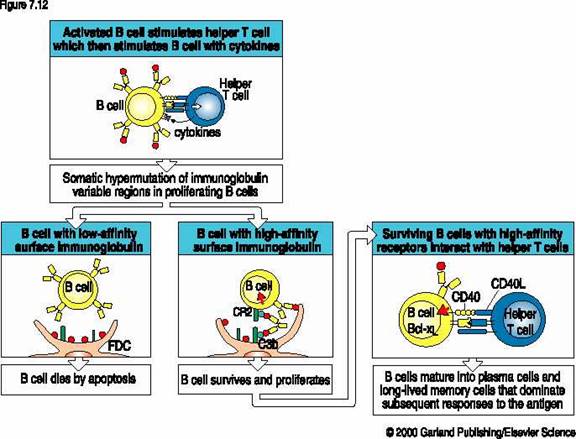
IL-5 and IL-6 are secreted by the TH2 helped T cells and they secrete predominantly IgM antibodies by the B cell plasma cell.
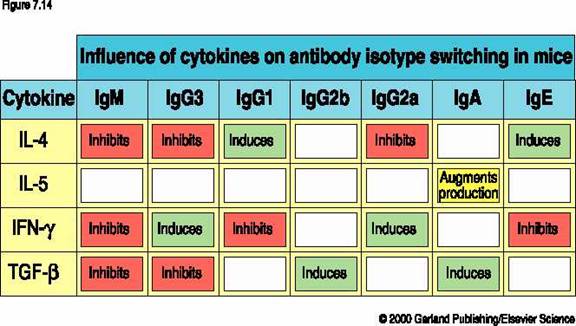
Activated B cells undergo somatic hypermutation and affinity maturation in the specialized microenvironment of the germinal center.
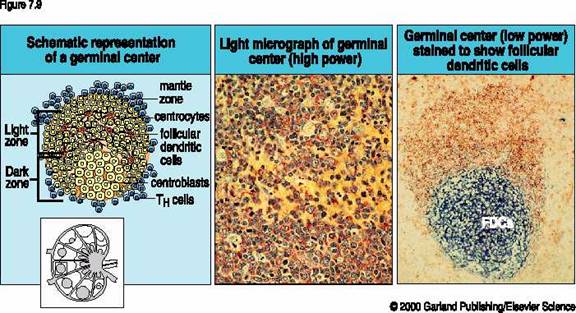
COMMON THEME:
Lymphocyte development = phase of activation, proliferation and then selection.
ICCOSOMES ( Immune – complex coated bodies). Hang around for awhile. Help with B memory cells and affinity maturation.
T cells and IgG production.
Interaction with T cells are required for isotype switching in B cells.
Chapter 2 – first immunoglobulins produced are IgM and IgD, but after activation by antigen B cells can switch their heavy chain isotype to produce IgG, IgA and IgE. The particular isotype to which a switch is made depends on the cytokines secreted by the helper T cell. The roles of individual cytokines in switching the isotype of mouse immunoglobulins is well known. Humans are still a work in progress. CD40 ligand is on the X chromosome, = more males than females with impaired immunity , only one copy of the X chromosome. CD40 is needed to switch.
Summary: Part one-
B cells respond to specific antigen with activation, proliferation and differentiation. They then become plasma cells that synthesize and secrete massive amounts of antibody. Activation of a mature but naïve B cell requires signals delivered through its antigen receptor and most B cells also need additional signals that are delivered only on cognate interaction with an antigen-specific helper T cell.
The first antibodies made are always IgM, further contact with effector helper T cells is required for activated B cells to undergo isotype switching.
ANTIBODY EFFECTOR FUNCTIONS
As the B cell response to an infection gets under way, isotype switching diversifies the functional properties of the antibody Fc region which contains binding sites for other proteins and cells of the immune system. Fc regions serve two distinct: they deliver antibody to anatomical sites that would otherwise be inaccessible and they link bound antigen to molecules or cells that will effect its destruction.
Fc receptors.
Now we are going to discuss how antibodies of different isotypes recruit nonspecific effector cells, such as macrophages and neutrophils into the immune response by interaction with their Fc receptors.
IgM, IgG and IgA antibodies protect the blood and extracellular fluids.
The first response from an antibody is IgM a pentamer. Carried by the blood to the site of infection. Because of its size can’t penetrate certain areas, but because of its size it can cross bind and hold the pathogen in place. There are no receptors for the IgM Fc region on phagocytes, so IgM can not directly recruit the destructive capabilities of these cells into the immune response. The Fc region of IgM can however, bind complement and activate that system.
Septicemia = blood borne infections. IgM, IgG
IgA and IgG are transported across epithelial barriers by specific receptor proteins.
IgM, IgG and IgA monomeric provide antigen-binding functions within the fluids and tissues of the body. Dimeric IgA protects the surfaces of the epithelia that communicate with the external environment and are particularly vulnerable to infection. Gastrointestinal tract, eyes, nose, throat, respiratory, urinary, genital and mammary glands. Mucusal epithelium. The cells are targeted in the specific areas, however, the IgA secreting plasma cells are on one side of the epithelium and their target pathogens are on the other side. TO reach their targets the dimeric IgA molecules must be transported across the epithelium by means of a receptor on the basolateral surface of the epithelial cells.
Transcytosis.,…… one side of the cell to the other side of the cell intact.
Secretory component.

IgG is actively transported from the blood into the extracellular spaces within tissues by an Fc receptor present on the endothelial cells. A Brambell receptor ( FcRB). This transport into the tissues helps protect the body and tissues from infection, but also protects the IgG component from breaking down. = a long lived IgG molecule.
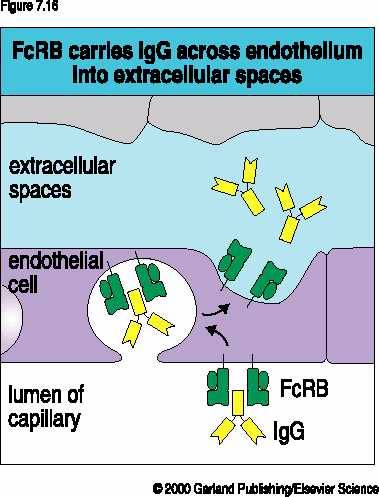
Passive transfer of immunity = mother to child via breast milk = IgA.
IgG is also in play during pregnancy, from the mother’s circulation through the placenta. A certain amount of protection until they begin to make their own.
Antibody production is deficient in very young infants.
Neonatals- premature. Lowest IgG when they need it the most.
High affinity IgG and IgA antibodies are used to neutralize microbial toxins and animal venom.
Some toxins are a combination of the toxin and a binding receptor for the human cell. Diphtheria and tetanus. = toxoids. Antibodies are made against the binding receptor. Toxins are very potent.
Venom, acts too quick for your own immune response so we get you an anti-venom usually made in animals. = Passive immunity.
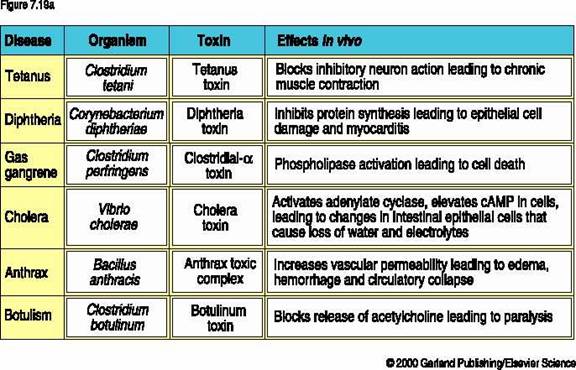
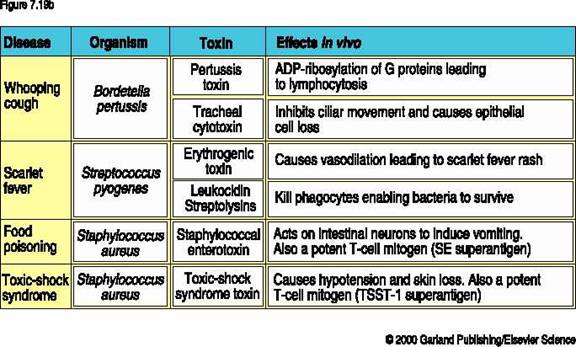
High affinity neutralizing antibodies prevent viruses and bacteria from infecting cells.
The first step in an infection by a virus is for it to attach to the cell by means of a cell-surface protein. Important in that viruses inoculate themselves into you via specific routes.
Example: Influenza uses hemagglutinin. = clumps red cells together.
Antibodies coat the virus so it can not attach and infect.

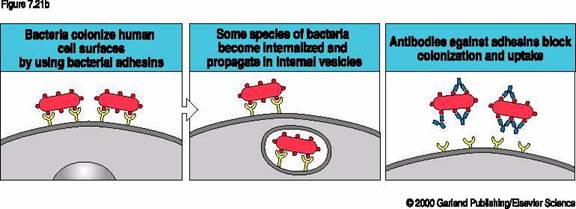
Bacterial exploit mucosal surfaces. IgG is not the best form of delivery system. Think IgA.
The Fc receptors of hematopoietic cells are signaling receptors that bind the Fc regions of antibodies.
While the binding of antibodies to the cell surface to neutralize a virus or bacteria works, it doesn’t get rid of the pathogen. So now what….. once those antibodies have bound to the virus or pathogen, the other cells = PMN’s, macrophages, blood monocytes have receptors to those antibodies that have bound up the pathogen. Receptors to other isotypes of antibodies= Fc receptors.

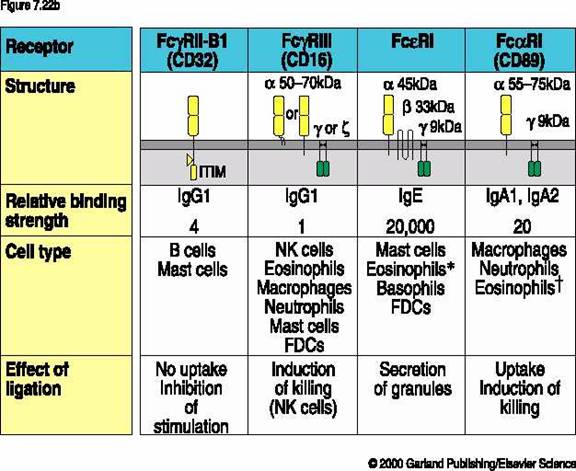
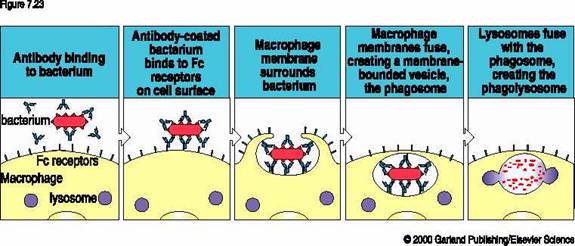
Phagocyte Fc receptors facilitate the recognition, uptake and destruction of antibody coated pathogens.
WE know that phagocytic cells can ingest and destroy bacteria on their own in the absence of a specific antibody. They are just MUCH MORE EFFICIENT when the pathogen is coated with antibodies. It will “walk” around the pathogen using the Fc receptors as a guide or crutch.
IgE binds to high affinity Fc receptors on mast cells, basophils and activated Eosinophils.
CD4 TH2 predominantly produces cytokines that promote the isotype switching of antibodies to the IgE isotype.
Basophils, Eosinophils and Mast cells all carry granules with anti-inflammatory mediators and histamine. Once the granules are dumped they produce more. They also cause an increase in blood vessel permeability = accumulation of fluid = inflammatory response.
Red, pain, swelling,
Because they are already Pre-packaged very impressive FAST response.
Parasites are not unicellular so the normal rules don’t apply. We want to muscle them out….. flush them out.
Allergens, you make a response to allergies… pollen, dust. Etc..
Anaphylaxis. = acute systemic immune response.

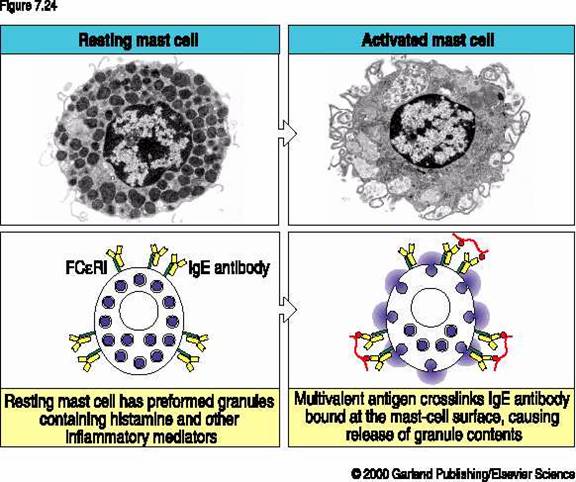
Fc receptors activate natural killer cells to destroy antibody –coated human cells.
Natural Killer Cells ( NK cells) = large effector lymphocytes that circulate in the blood. Chief role is in innate immunity.
Summary for part Two:
Secreter antibodies are the only effector molecules produced by B cells; neutralizing the pathogen. Delivery of antibodies to sites where they would not be carried by the circulation of the blood and lymph. Constant supply of igA in the gut, lumen of the intestines and other mucosal surfaces that will bind to the microorganisms that inhabit and infect those tissues.
Antibody binds first to the antigen and then to the Fc receptor for phagocytes versus IgE antibody bound first to the Fc receptor of mast cells, baso and Eosinophils and then awaits its antigen.



|
|
|
|
صنع الذكريات والتفكير يدمر الدماغ.. دراسة تشرح السبب
|
|
|
|
|
|
|
بركان ينفت الذهب في أقصى جنوب الأرض.. ما القصة؟
|
|
|
|
|
|
خلال الأسبوع الحالي ستعمل بشكل تجريبي.. هيئة الصحة والتعليم الطبي في العتبة الحسينية تحدد موعد افتتاح مؤسسة الثقلين لعلاج الأورام في البصرة
|
|
|
|
على مساحة (1200) م2.. نسبة الإنجاز في مشروع تسقيف المخيم الحسيني المشرف تصل إلى (98%)
|
|
|
|
تضمنت مجموعة من المحاور والبرامج العلمية الأكاديمية... جامعتا وارث الأنبياء(ع) وواسط توقعان اتفاقية علمية
|
|
|
|
بالفيديو: بعد أن وجه بالتكفل بعلاجه بعد معاناة لمدة (12) عاما.. ممثل المرجعية العليا يستقبل الشاب (حسن) ويوصي بالاستمرار معه حتى يقف على قدميه مجددا
|